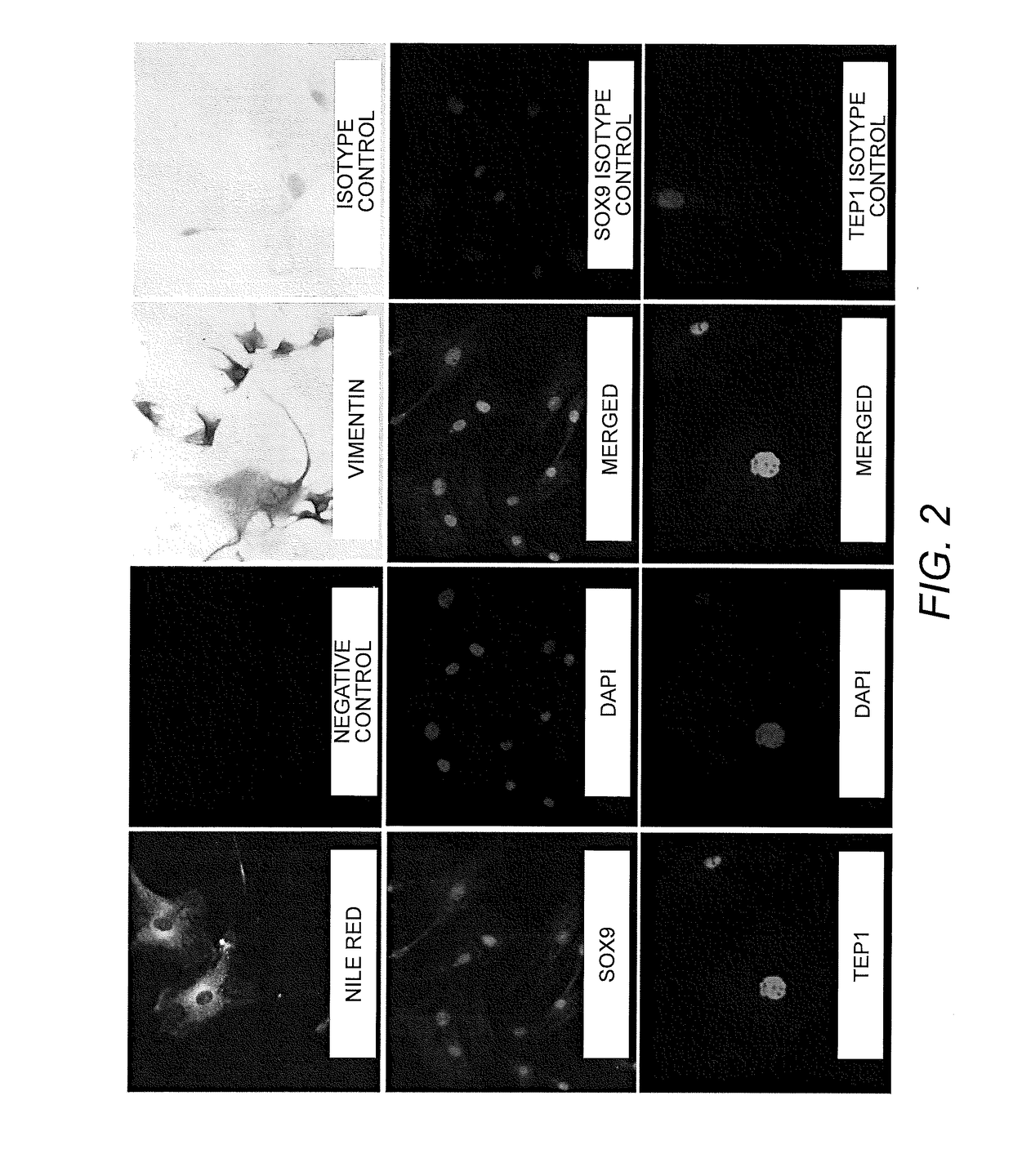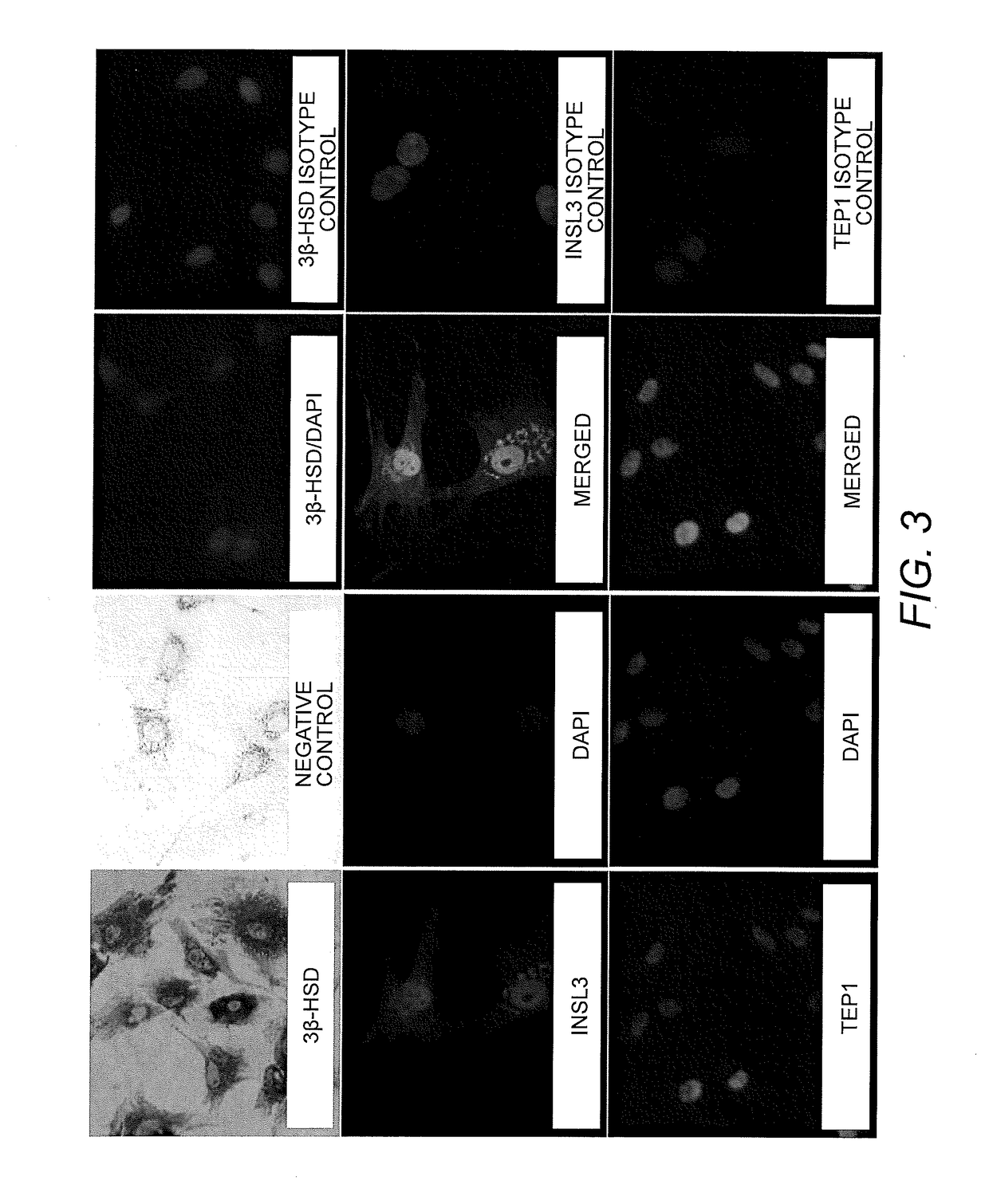Method of producing in vitro testicular constructs and uses thereof
a testicular and in vitro technology, applied in the field of in vitro testicular construct production, can solve the problems of loss of function and cell-type-specific gene expression, inability to maintain highly complex signaling interactions of existing in vitro models, and inability to support human in vitro systems
- Summary
- Abstract
- Description
- Claims
- Application Information
AI Technical Summary
Benefits of technology
Problems solved by technology
Method used
Image
Examples
example 1
Human Testis Material
[0091]Human testis tissue was obtained from The National Disease Research Interchange (NDRI). Testicular tissue was used for human testis extracellular matrix (ECM) extraction or cut into small segments to be used for cryopreservation and immunohistochemical testing. For cryopreservation, tissue fragments (˜2-5 mm) were frozen in 1× minimum essential medium containing 8% DMSO, 20% fetal bovine serum (FBS) slowly overnight using a Mr. Frosty container inside a −80° C. freezer. Cryotubes were moved to liquid nitrogen (−196° C.) for long-term storage. For all of cell isolations, cryopreserved tissue was used. Tissue pieces used for immunohistochemical staining were fixed in 4% paraformaldehyde and paraffin-embedded. Morphology of testes, stained by Hematoxylin and Eosin (H&E), showed normal spermatogenesis in all patient samples used in this study. All human materials in this study were used under regulation and approval of Institutional Review Board (IRB) of the W...
example 2
Testicular Cell Isolation, Culture and Cryopreservation of Spermatogonial Stem Cell (SSC) Lines
[0092]Preparation and Culturing of SSC.
[0093]Spermatogonial cell lines were isolated and cultured as previously described using a modified SSC propagation media that included growth factors necessary for maintenance of spermatogonia in their undifferentiated state (Sadri-Ardekani, H., et al., Propagation of human spermatogonial stem cells in vitro. JAMA: The Journal of the American Medical Association, 302(19):2127-34 (2009); Sadri-Ardekani, H., et al., In vitro propagation of human prepubertal spermatogonial stem cells. JAMA: The Journal of the American Medical Association, 305(23):2416-8 (2011)) Briefly, previously cryopreserved testicular tissue segments of about 100 mg to 200 mg were thawed and enzymatically digested using a combination of collagenase, hyaloronidase, and trypsin. A two-step enzymatic digestion was performed and isolated testicular cells were cultured at 37° C., 5% CO2 ...
example 3
Testicular Cell Isolation, Culture, Immortalization and Cryopreservation of Primary Human Sertoli Cell Lines
[0096]Preparation and Culturing of Sertoli Cell Lines. Human Sertoli cells were isolated from human tissue as previously described by Chui et al. (Chui, K., et al., Characterization and functionality of proliferative human Sertoli cells. Cell Transplant 20(5):619-35(2011)). Briefly, testicular samples were obtained within 24 hours of death. These tissues were washed first with ice-cold calcium / magnesium-free Hank's balanced salt solution (HBSS) containing 100 U / mL penicillin and 100 μg / mL streptomycin. The tunica albuginea was removed and separated brown tubule tissue was transferred to an Erlenmeyer flask in HBSS. These tissues were shaken at 275-325 rpm for 15 minutes to separate the interstitial cells from the tubules. The supernatant was removed following removal from shaker and 0.25% trypsin and 0.1% collagenase type IV (Sigma) were added with 300 rpm shaking for 20 minut...
PUM
 Login to View More
Login to View More Abstract
Description
Claims
Application Information
 Login to View More
Login to View More - R&D
- Intellectual Property
- Life Sciences
- Materials
- Tech Scout
- Unparalleled Data Quality
- Higher Quality Content
- 60% Fewer Hallucinations
Browse by: Latest US Patents, China's latest patents, Technical Efficacy Thesaurus, Application Domain, Technology Topic, Popular Technical Reports.
© 2025 PatSnap. All rights reserved.Legal|Privacy policy|Modern Slavery Act Transparency Statement|Sitemap|About US| Contact US: help@patsnap.com



